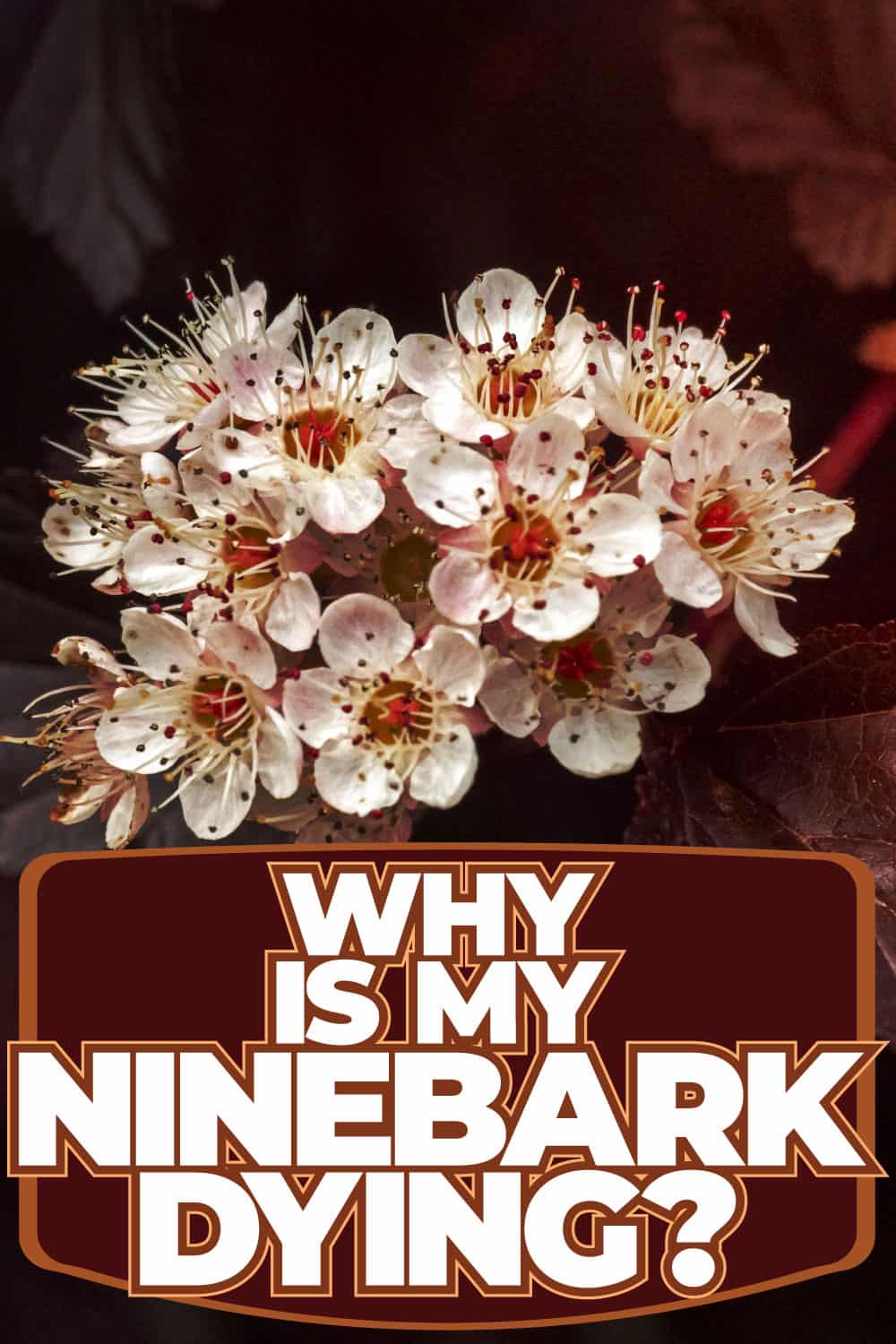Ninebark is popular among gardeners because it is reliable, easy to maintain, and resilient, especially during cold seasons. In addition, it is excellent throughout the seasons. But what causes a ninebark to die, and what should you do about it? We researched for you, so stay put and learn.
Your ninebark plant can die if it fails to receive enough growth requirements, such as adequate water, sunlight, and nutrients from the soil. To keep the plant from dying, transplant it to an area where it receives sufficient growth requirements.
In addition, pests and diseases also affect its health. So inspect the plant for pest infestation and get rid of them.
If you take good care of your ninebark and provide everything, you can expect this plant to reach its full potential. So, if you want to know how to do that, it would be best to keep reading. We have the details to help you correctly handle this beautiful, versatile plant.
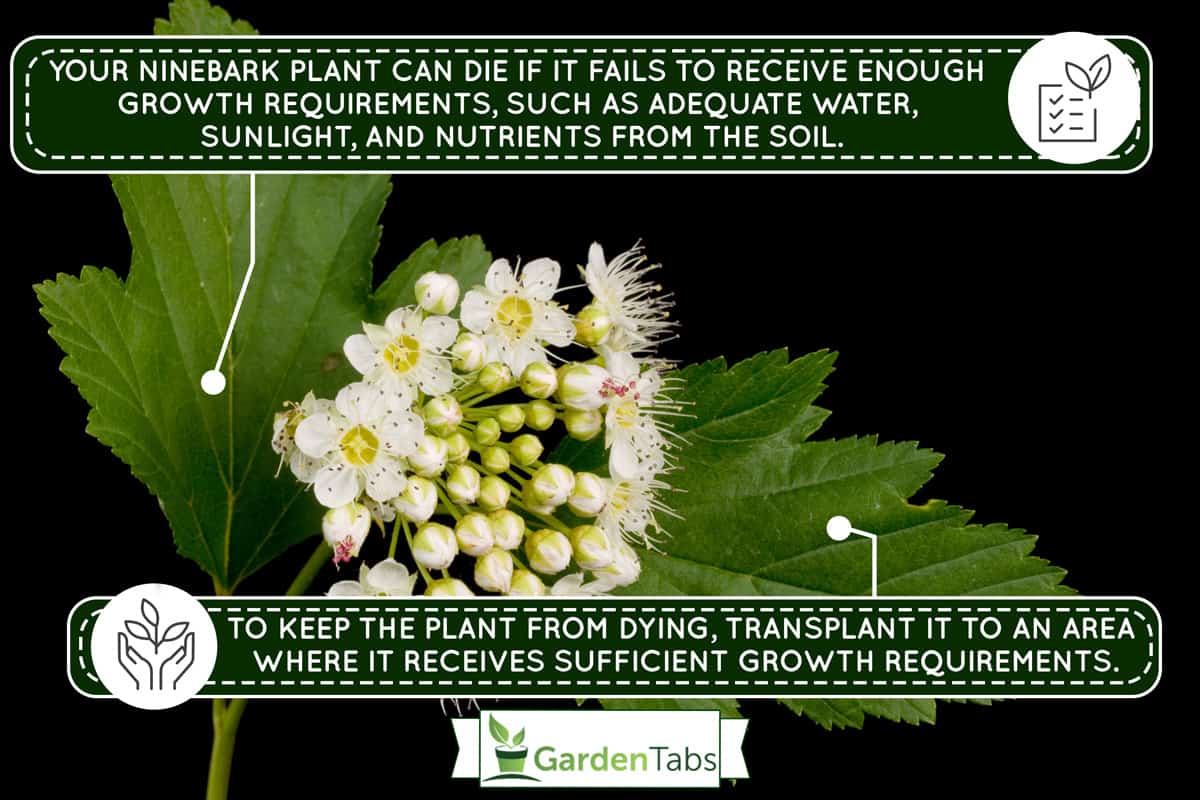
What To Do If Ninebark Is Dying
A ninebark shrub may perish for several reasons, including diseases, pests, or unfavorable growing conditions.
If the ninebark is dying due to pests, finding and getting rid of them is crucial. But be careful not to damage the plant further when removing those stubborn pests.
If the plant is suffering from a disease, you can eliminate the infected area to stop the disease from extending over a large area.
If the cause for deterioration is poor growing conditions, such as inadequate drainage, insufficient sunlight, and inappropriate soil, it would be best to plant the ninebark where it can get these things adequately.
The ninebark might wilt because of heat stress and loss of water. However, you don't have to worry if you notice that your ninebark is losing its leaves. As a deciduous shrub, ninebark will shed its leaves in the autumn.
Why Does Ninebark Get Fungus?
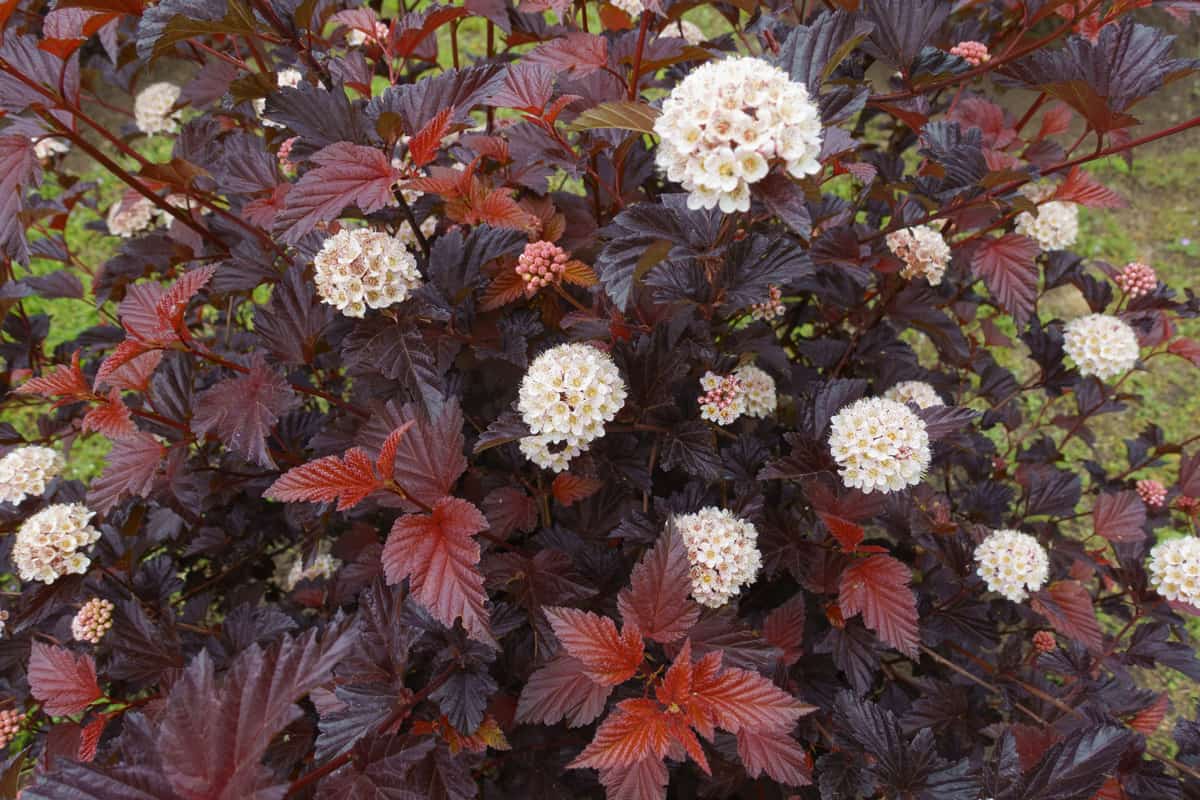
Fungi, such as powdery leaf spots, mildew, and anthracnose, can harm your ninebark. Often, these fungi exist primarily due to wet and humid conditions.
How to Treat Ninebark Fungus
You'll have difficulty trying to control the stubborn fungi once they start to develop. So it would be best to pick and plant a ninebark variety resistant to diseases.
Also, it would be best to grow them in locations where they can get the required sunlight and soil drainage. If fungi have already infected your ninebark, get rid of and destroy the infected plant parts. In addition, apply a fungicide to control further damage.
What Pests and Diseases Affect Ninebark?
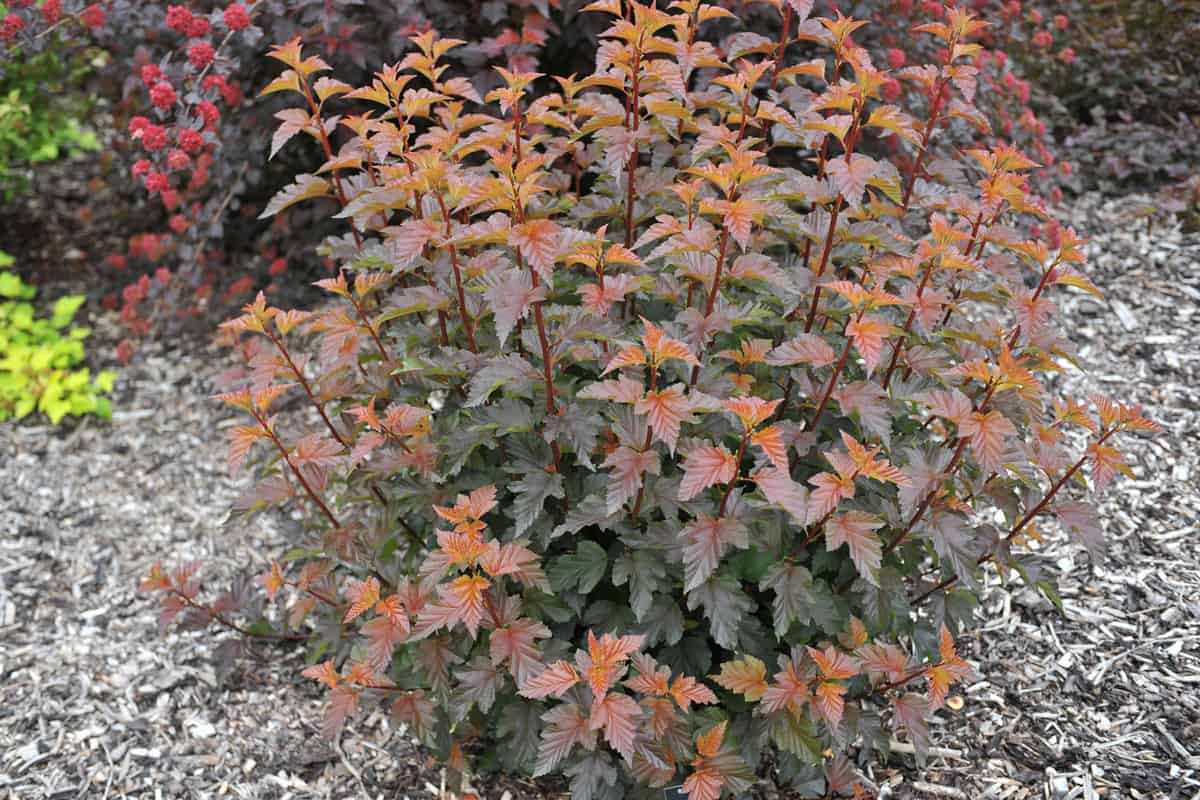
Most pests and diseases can't get through to ninebark bushes quickly. However, the plant is more susceptible to infections if exposed to harsh conditions.
The following are some of the pests and diseases that may affect your ninebark:
- Fireblight
- Powdery mildew
- Leaf spots
- Witch's broom fungal infection
How to Control Infections in Ninebark
You can counter each of the above infections by applying suitable fungicides. Also, Spraying neem oil on the problem areas may help.
We highly suggest removing any dead leaves on the plant and ground to minimize the chances of infection. Additionally, it would be best to avoid using nitrogen fertilizers.
Furthermore, reducing the frequency of irrigation would help. Because the plant is drought-resistant, this won't significantly impact it.
In extreme circumstances, you may have to cut the plant down when none of the alternative measures are effective. In such instances, trying another species of ninebark is advisable.
How To Care For Ninebark Plants
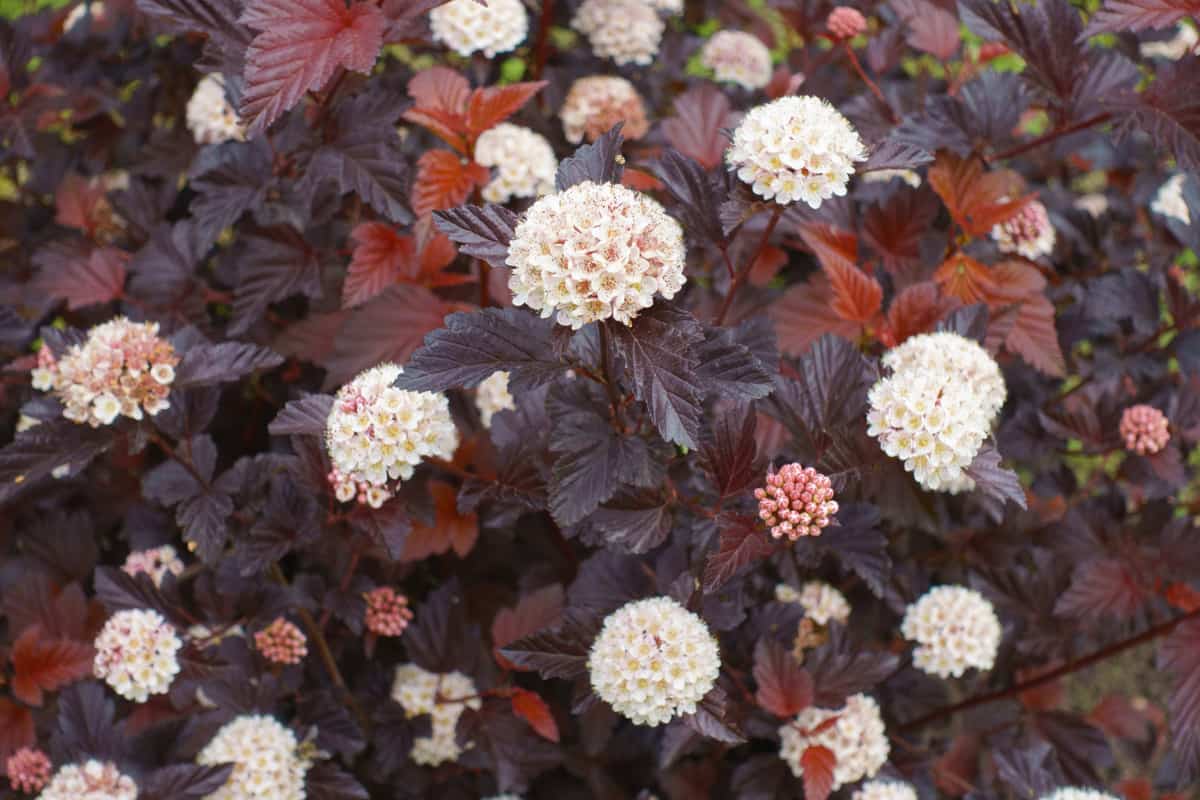
If you don't know how to grow a ninebark plant properly, keep reading as we provide guidelines on how to do that.
Plant in Well-draining Acidic Soil
The ninebark shrub may grow in various soil types, including those with wildly divergent pH levels. However, if you want optimal outcomes, it would be best to plant this plant in well-draining acidic soil.
Ninebarks can be as tall as 5 ft. and 12 ft. in width, so we suggest giving them considerable room to grow, primarily if you are to plant them in a landscape setting.
Ensure Adequate Exposure to Sunlight
Most plants in the north need direct sunlight for up to six hours daily. So, for your ninebark to get the most satisfactory flowering results, we suggest you place them in full sun to part shade. On the other hand, plants in the south prefer afternoon shade.
Additionally, this plant is popular in USDA hardiness zones 2 to 7. Thus, they do excellently in regions with direct, intense sunlight, yet they can also thrive in some shade areas.
Monitor the Temperature and Humidity
Because of the intense summer heat and humidity in the south, ninebark does not grow well outside of its suggested USDA hardiness zones, where it is tolerant of a wide range of temperatures and humidity levels.
Powdery mildew often affects the ninebark if grown in a hot and humid climate.
Apply Fertilizer
Organic plant food and compost are the best fertilizer you can add to your ninebark. However, you can choose any suitable fertilizer for the shrubs.
Fertilize your plant once a year, preferably in the spring. To fertilize, begin applying the product to the soil a few inches away from your ninebark's trunk. Once finished, spread out a thin coating of fertilizer around its base.
Adequate Watering
Once established, these plants don't require as much water. Their drought resistance develops within a year or two.
Maintain a light watering schedule for the first two years by watering the plants 2 - 3 times a week, and after that, watering the plant once a week will suffice.
Remember that you should only water the base of your ninebark since wetting the leaves will only welcome fungal infections.
How to Tell if Ninebark Needs Watering
Do not feel troubled if your newly planted ninebark looks like it is wilting. Keep in mind that the plant is adapting to a new environment and these signs may not imply under-watering.
It would be best to avoid planting it in soil that's too wet, since root rot can result from this. However, if you see curled leaves, the soil may be too clay-like for your ninebark to absorb the water properly.
When is the Best Time to Water Ninebark?
Ninebark prefers watering in the morning since it will be able to dry out as the day warms up. This drought-resistant plant does not require additional irrigation throughout the winter months.
Read more: "How Often To Water Plants In Clay Soil [And How To Make It Fertile]."
Using the guidelines mentioned above, you can help your ninebark thrive and beautify your garden for many years without putting in too much effort.
How To Plant Ninebark
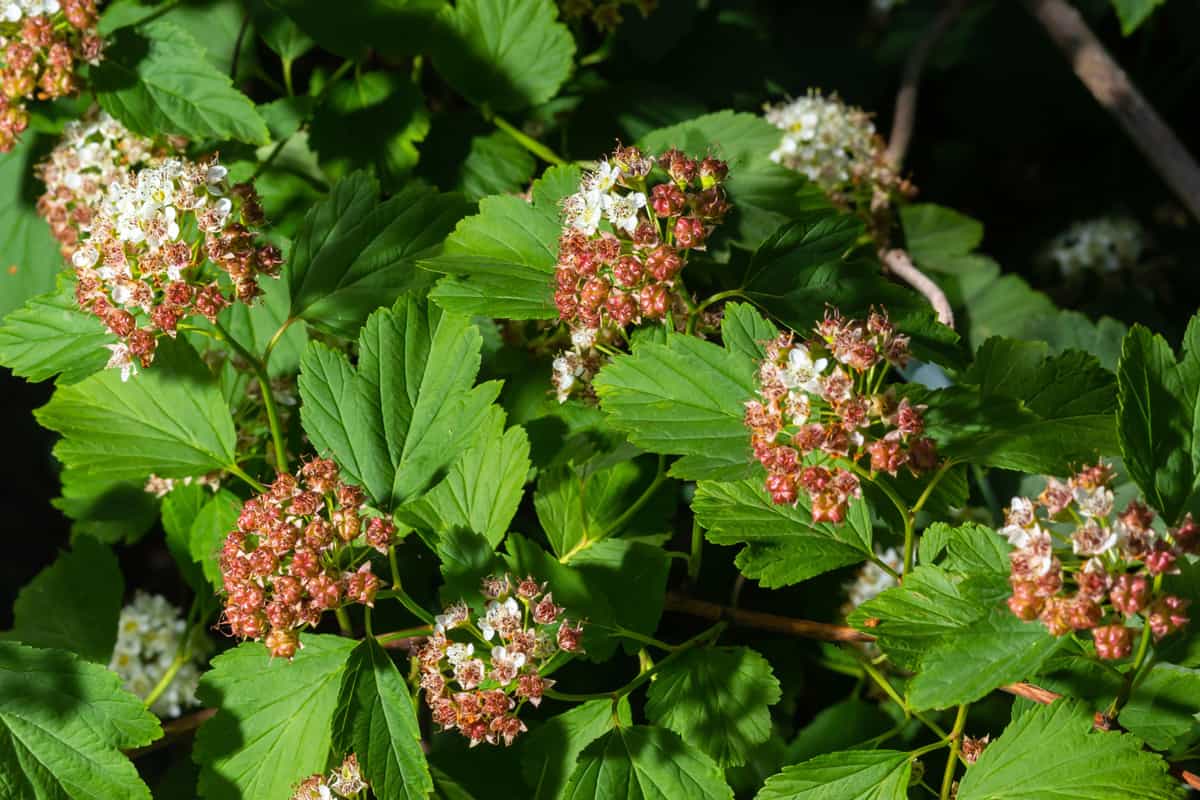
- Get a shovel and loosen the soil around 15" to 20" deep.
- Add compost into the soil. Ensure that you incorporate a thick layer.
- Excavate a hole twice the diameter of your ninebark container.
- Carefully remove the shrub from the container and set it in the hole with the top of the root ball at a level equal to the soil.
- Fill the hole to the brim, then carefully press it into place.
- Adequately water the ninebark.
How To Prune Ninebark Shrubs

The most critical component of caring for a ninebark plant is the pruning and trimming process. Regular pruning will help your plant to grow abundant and healthy leaves. In addition, it will also help to avoid mildew infestation.
The ideal time to start pruning your ninebark is late fall to early spring, when the shrub is dormant. Use pruning shears to trim long twigs that may protrude from the ninebark's sides or top.
We recommend trimming around 1/4 inch above the outside buds that face outwards.
Lopping shears are ideal for cutting the inner branches back to the main stem. Do not exceed cutting 1/3 of the inner twigs at a time.
When your ninebark finishes blooming, undertake mild pruning to eliminate the branches that wander off. Ninebark shrubs can overgrow if left unattended for a long time, leading to many dead branches.
We suggest cutting 1/3 of the branches to the ground every other year until the new growths meet your expectations.
Before making such cuts, please wait until your plant establishes itself for at least two to three years. It's also ideal for planting seeds or cuttings in the spring.
As a precautionary measure, permanently remove any decaying leaves and deadwood from your ninebark.
Check out this lopping shear on Amazon.
Wrap It All Up
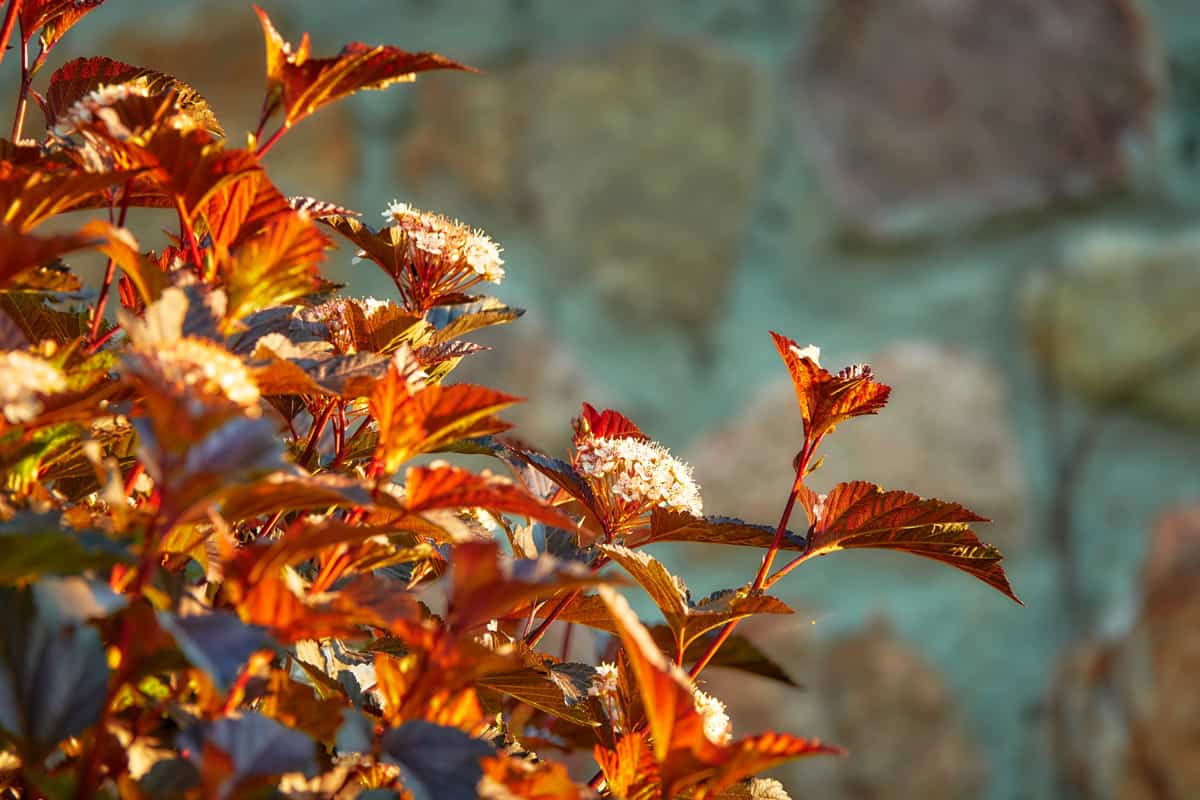
Caring for ninebark shrubs is not that challenging, especially if you know how to do it. If you find that they're dying, you must perform regular care until they are regenerated. We hope that this post will guide you in reviving your ninebark plants.
For further reading, check these related posts below:
Why Is My Creeping Jenny Dying [And What To Do About It]
Why Is My Japanese Maple Dying? [And How To Save It]
